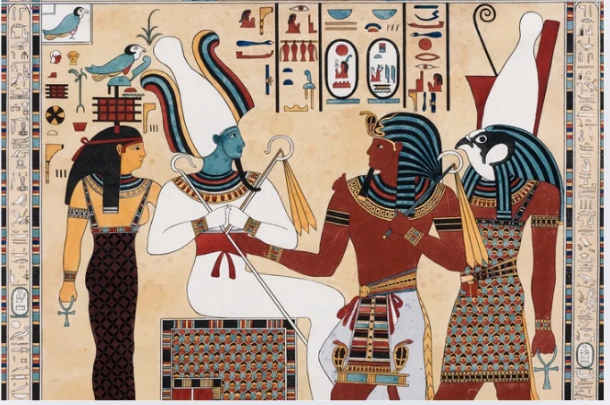Introduction
Art has always been a reflection of culture, beliefs, and the way people interact with their world. Ancient Artz, a term that refers to the artistic expressions of ancient civilizations, offers us a glimpse into the lives of people long gone. From intricate sculptures to grand architectural structures, Ancient Artz tells stories of human achievement, creativity, and spirituality. But what exactly is Ancient Artz, and why is it so important?
What is Ancient Artz?
Ancient Artz encompasses the visual and ornamental artwork produced by early human cultures. This can include everything from cave paintings and pottery to grand sculptures and monumental buildings. The term “Artz” often evokes images of the most famous ancient works, such as the Egyptian pyramids or Greek statues, but it encompasses a vast range of artistic expressions across cultures and time periods.
The Importance of Ancient Artz
Why does Ancient Artz matter? For starters, it helps us understand the values, beliefs, and technologies of past societies. It allows us to connect with the ancient world in a deeply personal way, seeing how people in those times interpreted their world through visual representation. Moreover, Ancient Artz has influenced countless generations of artists, leaving a legacy that continues to shape art today.
The Origins of Ancient Artz
Tracing the Beginnings
The tale of Ancient Artz starts at the very beginning of human civilization. As early humans began to settle in one place and develop more complex societies, they started expressing themselves through art. The first examples of Ancient Artz were often functional, such as pottery or tools, but over time, art became a way to communicate cultural identity, spiritual beliefs, and power.
Early Civilizations and Their Contributions
Ancient civilizations such as the Egyptians, Greeks, and Mesopotamians made significant contributions to the development of art. The Egyptians are known for their monumental structures and detailed tomb paintings, while the Greeks perfected sculpture and architecture. Mesopotamians, on the other hand, created intricate reliefs and grand palaces that still inspire awe today.
Key Characteristics of Ancient Artz
Materials Used
Ancient artists had limited resources compared to modern times, yet they created stunning works of art. Common materials included stone, clay, wood, metal, and ivory. The Egyptians, for instance, used limestone and sandstone for their sculptures, while the Greeks favored marble. These materials were chosen not only for their availability but also for their durability, ensuring that these masterpieces could withstand the test of time.
Techniques and Styles
The techniques used in Ancient Artz varied greatly depending on the civilization. In Egypt, for example, artists employed a unique method of depicting figures in profile, with heads and legs shown from the side but torsos from the front. In Greece, the idealized human form was central to their artistic style, leading to the creation of some of the most famous sculptures in history. Mesopotamian art, meanwhile, was often more abstract and symbolic, with emphasis on storytelling through reliefs.
Ancient Artz Across Cultures
Ancient Artz in Egypt
Egyptian art is perhaps the most iconic of all ancient art forms. Known for its highly stylized depictions of gods, pharaohs, and daily life, Egyptian art was deeply intertwined with religion. Temples and tombs were decorated with murals and carvings, often meant to ensure a successful journey to the afterlife. The Great Pyramids of Giza, with their massive stone blocks and perfect alignment, remain a testament to the Egyptians’ artistic and engineering prowess.
Ancient Artz in Greece
Greek art, particularly from the Classical period, is renowned for its focus on the human body and the pursuit of perfection. Greek sculptures like the Parthenon marbles and the statue of Zeus at Olympia are considered some of the greatest achievements in art history. Greek artists also excelled in pottery, creating beautiful and intricate designs that depicted everything from daily life to mythological scenes.
Ancient Artz in Mesopotamia
In Mesopotamia, art served both religious and political purposes. The Ishtar Gate of Babylon, with its magnificent blue tiles and reliefs of animals, is one of the most famous examples of Mesopotamian art. Additionally, the Sumerians created detailed cylinder seals, which were used to mark ownership and create impressions in clay.
Famous Ancient Artworks
The Pyramids of Egypt
The Pyramids of Giza are not just architectural marvels; they are works of art. Built as tombs for the pharaohs, these structures are perfectly aligned with the stars and demonstrate the Egyptians’ advanced understanding of mathematics and astronomy. The Great Pyramid, for example, was originally covered in smooth limestone, making it gleam in the sunlight.
The Parthenon in Greece
The Parthenon in Athens is a symbol of ancient Greek art and architecture. This temple, dedicated to the goddess Athena, is renowned for its elegant proportions and the intricacy of its sculptures. The Parthenon’s frieze, depicting a procession of gods and humans, remains one of the finest examples of Greek art.
The Ishtar Gate of Babylon
The Ishtar Gate, built by King Nebuchadnezzar II, is a striking example of Mesopotamian art. Covered in blue-glazed bricks and adorned with images of animals such as lions and dragons, the gate was once a grand entrance to the city of Babylon. Its grandeur and beauty were meant to impress visitors and showcase the power of the Babylonian empire.
The Legacy of Ancient Artz
Influence on Modern Art
Ancient Artz has significantly influenced contemporary art. The classical ideals of proportion and symmetry from Greek art, for example, influenced Renaissance artists such as Leonardo da Vinci and Michelangelo. Similarly, the abstract forms in Egyptian and Mesopotamian art continue to inspire contemporary artists exploring symbolism and minimalism.
Preserving Ancient Artz
Preserving Ancient Artz is no easy task. Over time, many artworks have been damaged or lost due to natural disasters, war, and the passage of time. However, efforts to protect and restore these works have been ongoing. Museums around the world house collections of ancient art, and archaeologists continue to uncover new examples of ancient artistic achievement.
Conclusion
Ancient Artz offers a window into the past, allowing us to understand the cultures, beliefs, and technologies of ancient civilizations. From the grand structures of Egypt to the detailed sculptures of Greece, these artworks have left an indelible mark on history. Their influence continues to be felt in modern art, and their preservation ensures that future generations will be able to appreciate their beauty and significance.
FAQs
What is the significance of Ancient Artz today?
Ancient Artz helps us understand the values, beliefs, and achievements of past civilizations. It provides a link between the past and the present, allowing us to learn from the creativity and innovation of our ancestors.
What materials were commonly used in Ancient Artz?
Materials like stone, clay, wood, metal, and ivory were commonly used in Ancient Artz. These materials were chosen for their durability and availability, allowing artworks to survive for millennia.
How did Ancient Artz influence modern artists?
Ancient Artz influenced modern artists by providing a foundation of artistic principles, such as proportion, symmetry, and symbolism. Renaissance artists, for example, drew inspiration from Greek and Roman art.
Are there any surviving examples of Ancient Artz?
Yes, many examples of Ancient Artz still survive today, including the pyramids of Egypt, the Parthenon in Greece, and the Ishtar Gate of Babylon. These iconic works still evoke wonder and admiration.
What can we learn from Ancient Artz?
From Ancient Art, we can learn about the creativity, culture, and technology of ancient civilizations. These works provide insight into how people in the past viewed their world and expressed their beliefs.













Leave a Reply